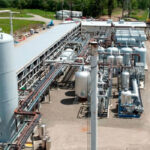While this might be surprising, rhinoplasty is the most popular form of elective cosmetic surgery and was the most performed procedure over the last two years, beating out procedures such as breast augmentation, eyelid surgeries, and facelifts.
What makes rhinoplasty so popular is its ability to completely transform the look of your face and improve a person’s breathing capabilities. But if you’re looking to reshape your nose, proper rest and recovery are required for the procedure to achieve its intended results.
Sleeping after rhinoplasty can be slightly challenging and uncomfortable but is vital to speed up the recovery process and ensure healing. Here are some things to know about sleeping after rhinoplasty.
Sleeping Comfortably After Rhinoplasty
Experts agree that the ideal position for sleeping post-rhinoplasty is laying on your back and at a slightly inclined position of about 35-40 degrees (or about 2-3 pillows). This position reduces the risk of swelling and fluid retention in the face, which can help promote good circulation and better breathing. Being on your back is important as even light pressures on the nose from side sleeping can be painful while the nose is still sensitive. Additionally, pressing into one side of the nose can cause congestion and block the nasal passageways.
It’s also recommended that if you share a bed with a partner or pet that they sleep separately for at least a few days after your procedure, as an accidental tail, paw or hand to the face can be very painful and damaging to your recovery.
Tips for Adjusting Your Sleeping Position
It can be difficult to adjust to a new sleeping position, especially when it is discouraged to change positions through the night. Side sleepers especially may have issues with remaining on their back during recovery, and those who sleep with one pillow may find trouble with the sudden incline.
It is recommended that you begin your attempts at this recovery sleeping position before your procedure, either by a week or several days before your procedure; that way, you won’t be adjusting to this change of position while trying to recover, and rest is most important.
A great item to have on hand is an airline pillow, as it can help protect your neck and prevent your head from turning too much during the night. A backrest pillow with arms or stacking pillows on either side of you will also help you prevent tossing and turning during the night.
When Can I Return to Normal
In general, a person can return to their preferred sleeping position after a week or so following their rhinoplasty procedure, though it is essential to receive approval from your surgeon before making this decision to ensure your healing has progressed far enough to avoid complications.
Additionally, it can take three weeks or more for the nose to be fully healed, so care must still be taken after returning to your preferred sleeping position and returning to the upward-facing inclined position if you find any pain or congestion from sleeping in another position.













